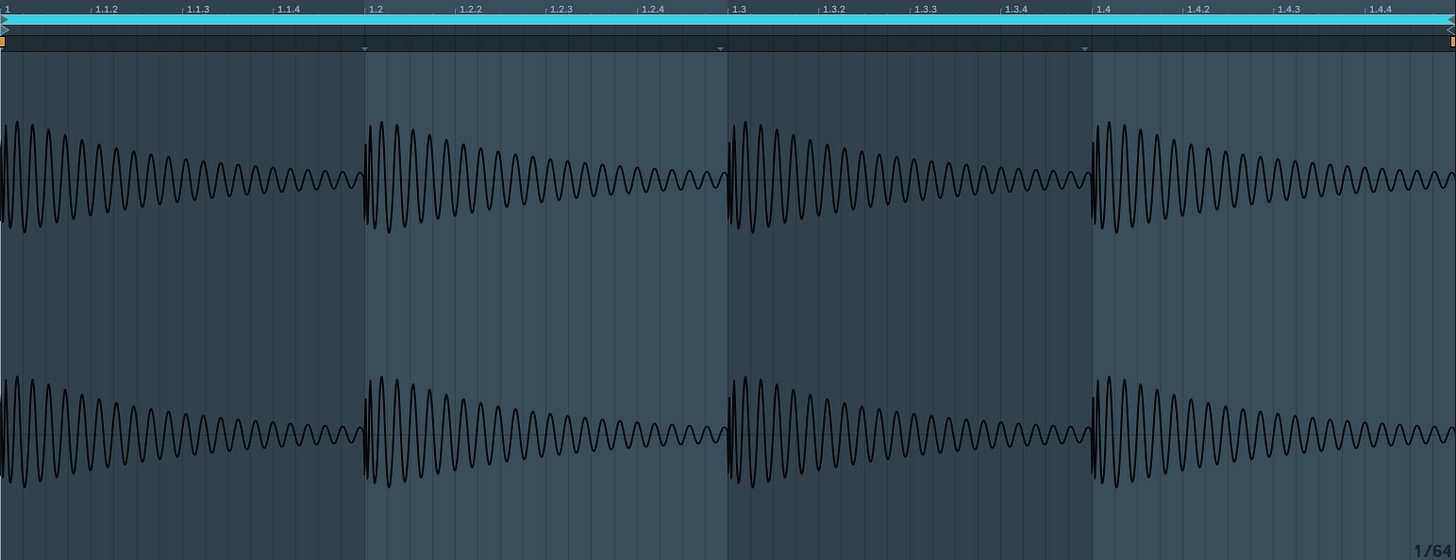In the world of sound design, the sine wave is often overlooked for its potential in subtractive synthesis. We've previously discussed this topic, concluding that sine waves may not be the most exciting choice for typical subtractive synthesis. However, don't be quick to dismiss the humble sine wave entirely. In other sound design scenarios (FM synthesis), it can be an invaluable tool. Today, we embark on a journey to create a powerful kick sound using nothing but a basic sine wave and some filter and few effects.
The Humble Sine Wave
We begin with a pure sine wave, a quintessential digital waveform. While it may seem uninteresting at first, we will transform it into a kick that can rival real-world examples. Let's dive in.
Initial Sound
For our project, we'll create a four-bar loop with a repetitive four-on-the-floor "sine-kick" pattern. Here's what it sounds like:
At this stage, the sound is far from captivating, more reminiscent of a jarring alarm than a kick. However, with some adjustments, we can mold it into something resembling a real kick drum.
Analyzing a Real Kick
Before we proceed, let's analyze a real kick drum sound. The amplitude envelope of a kick typically begins with an immediate burst that decays to silence in just a few milliseconds. To illustrate, here's a sample of a real kick:
The amplitude envelope of an 808 kick, though not a true acoustic example, shares similarities with typical kick drums. These percussive sounds are characterized by their short attack, absence of sustained tones, and quick decay.
Transforming the Sine Wave
By applying a similar amplitude envelope to our sine wave, we start to achieve a more percussive sound:
It's beginning to resemble a percussion instrument, such as a tambourine. However, by further tweaking the envelope settings, we can inch closer to the desired kick drum sound.
Adding a Pitch Envelope
Real kicks feature a fast pitch change after the initial attack. They start with a high pitch, which gradually descends over time. To replicate this effect, we introduce a pitch envelope. This envelope raises the pitch by an octave, then drops it by four octaves within about 300 milliseconds:
This alteration brings our sound closer to a typical electronic kick drum, and with some adjustments to the envelopes, you can achieve various results, from punchy to subtle to boomy.
Sound Refinement
Typically, kick drums don't utilize very low frequencies. Applying a high-pass filter to remove frequencies below 300Hz can result in a cleaner sound. Increasing the filter's resonance can make it sound even more boomy:
The sine wave still remains at the core, but it's worth noting that real kick drums are not entirely pure either. To add a touch of realism, consider applying a subtle overdrive effect to introduce some distortion
Conclusion
That's it! You've successfully transformed a basic sine wave into a dynamic kick sound. Keep in mind that there are countless variations of kick drum sounds, each suited to different styles of music. The beauty of sound design lies in the simplicity of the process. By experimenting with parameters and effects, you can create a wide array of unique kick sounds to elevate your music production.
If you have access to Ableton Live and wish to experiment with the sounds discussed in this article, here you can find the project.












